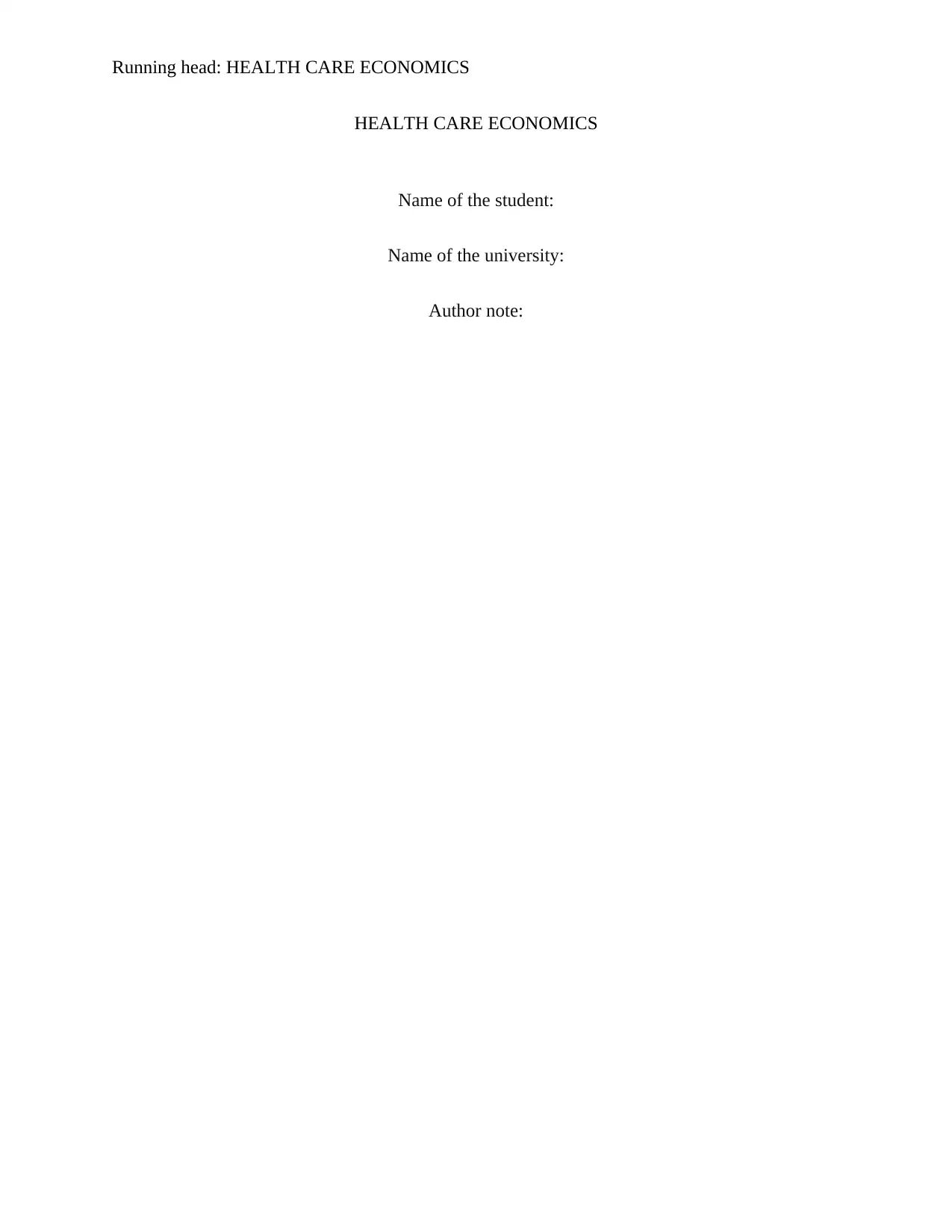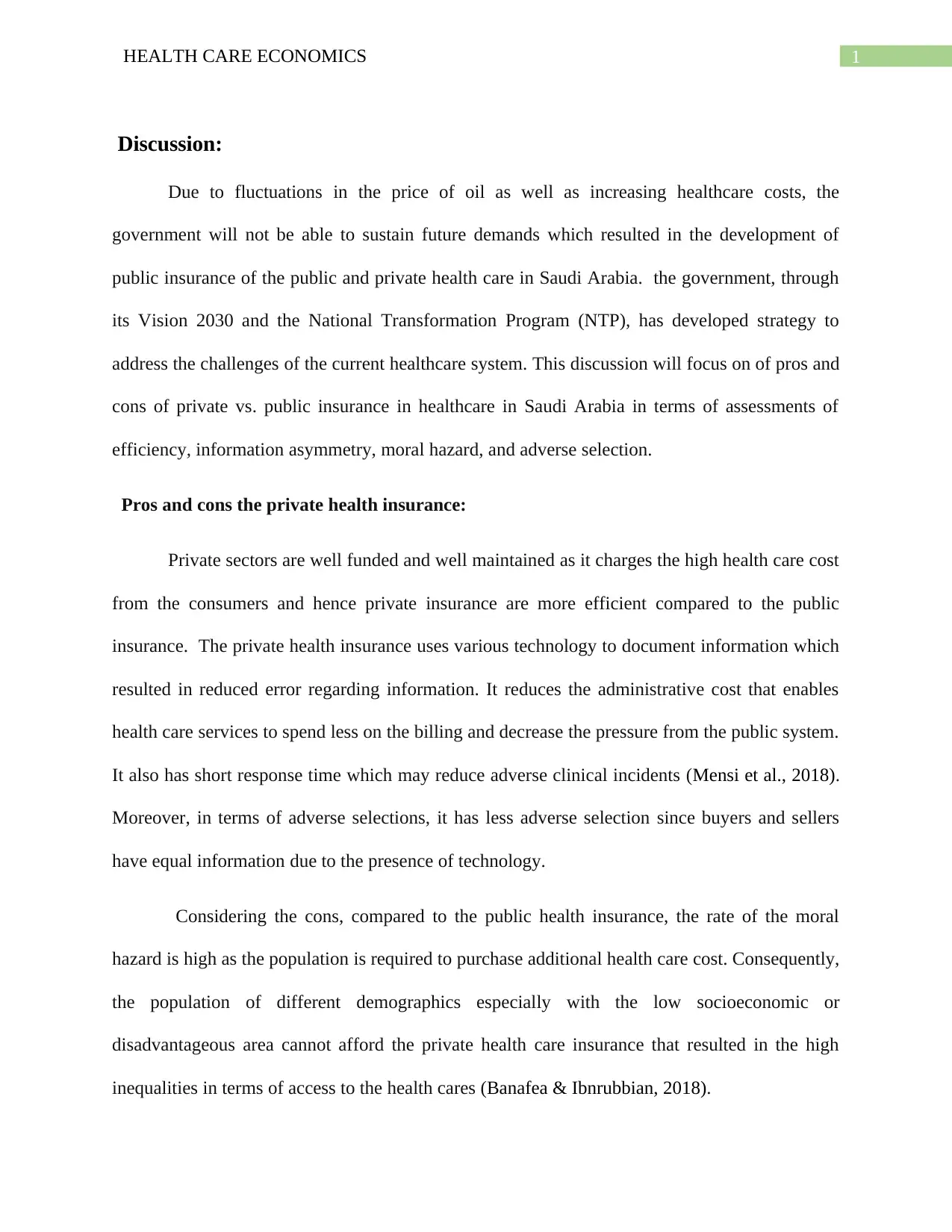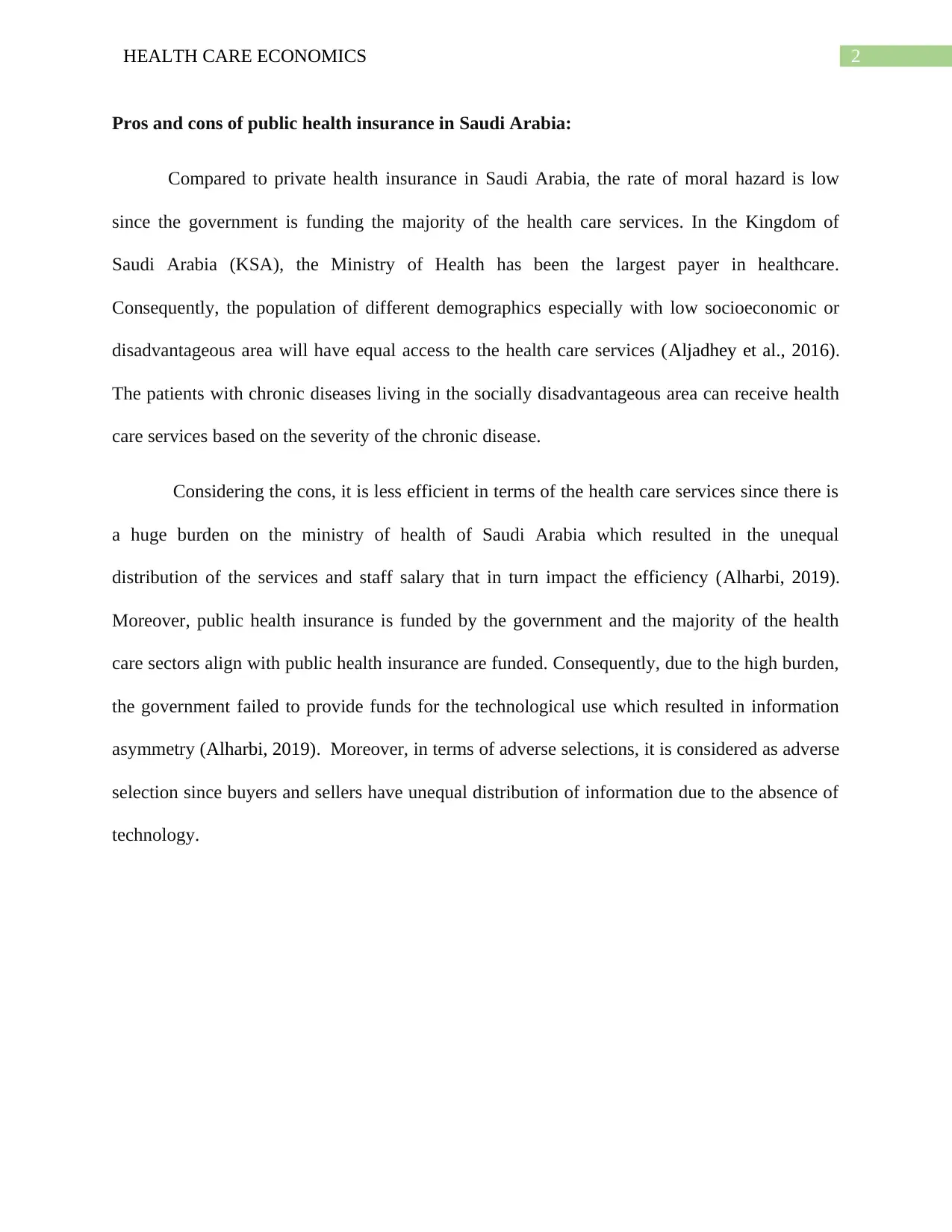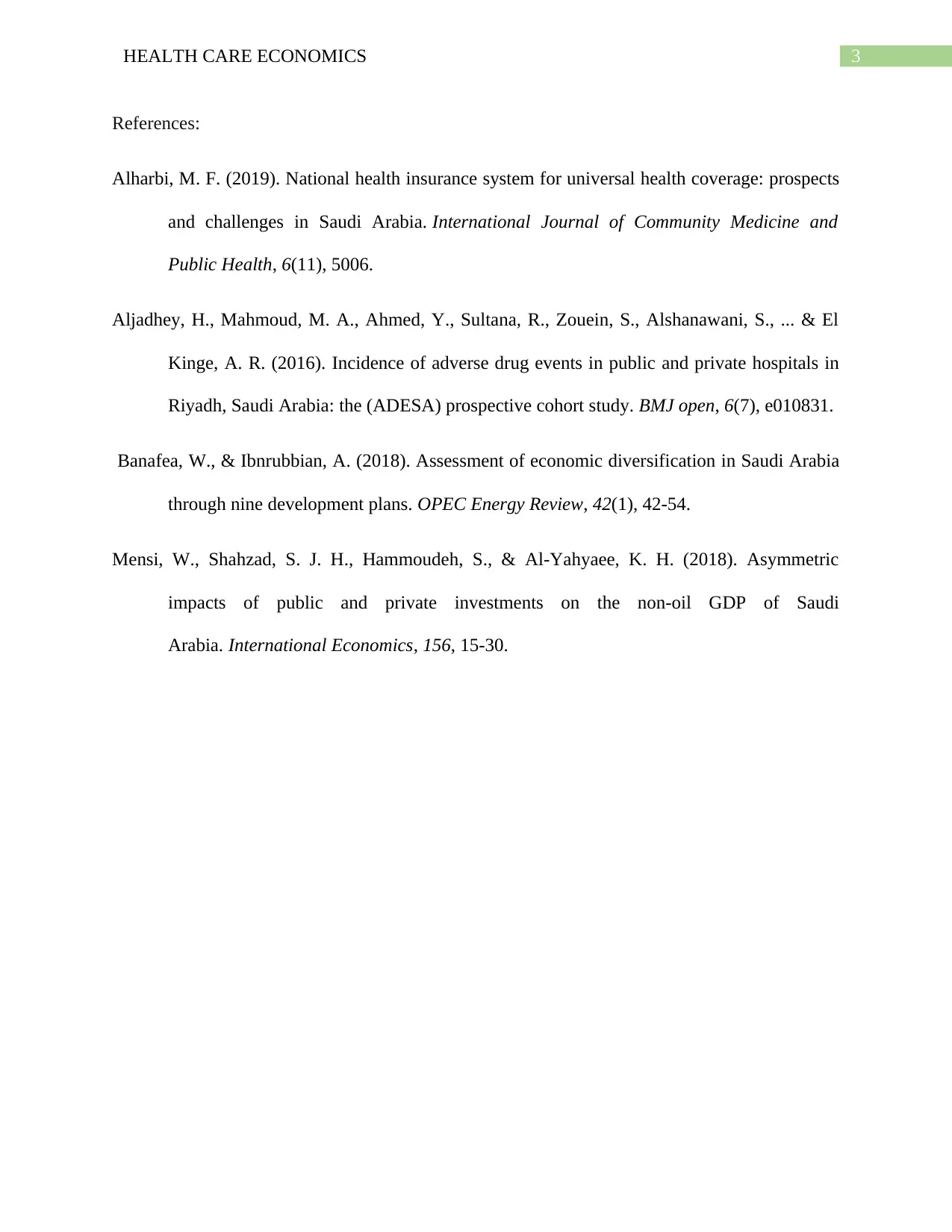Analysis of Public vs. Private Healthcare Insurance in Saudi Arabia
VerifiedAdded on 2022/08/19
|4
|796
|20
Discussion Board Post
AI Summary
This discussion post analyzes the healthcare system in Saudi Arabia, focusing on the advantages and disadvantages of public versus private health insurance. It explores the government's response to rising healthcare costs and oil price fluctuations, considering the Vision 2030 and the National Transformation Program (NTP). The assessment delves into key economic factors like efficiency, information asymmetry, moral hazard, and adverse selection within both public and private insurance models. The pros and cons of each system are presented, highlighting the private sector's efficiency due to funding and technology, while also acknowledging the potential for increased inequality. Conversely, the public system's lower moral hazard is contrasted with its potential inefficiencies and information gaps. The discussion references supporting literature and provides a comprehensive overview of the healthcare landscape in Saudi Arabia, offering a nuanced perspective on the challenges and opportunities within its insurance models.
1 out of 4











![[object Object]](/_next/static/media/star-bottom.7253800d.svg)